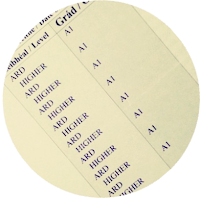Biology: The study of living organisms
Different areas of biology:
- Botany – study of plants
- Microbiology – study of small living things, such as bacteria
- Zoology – study of animals
- Ecology – study of the environment
- Genetics – study of genes
- Biochemistry – study of chemical processes that take place in organisms
- Anatomy – study of organs, muscles, structure of organisms
- Cytology – study of cells
- Immunology – study of immune systems of organisms
- Marine biology – study of organisms in the ocean
- Many more!
The scientific method: a series of investigations to identify problems and explain these by means of carrying out experiments
Process of the scientific method:
- Observation: noting or registering a phenomenon
- Hypothesis: a possible, untested explanation for the observation
- Experiment: a test to prove or disprove the hypothesis
- Data: the information gathered from testing
- Conclusion: the results of the testing are summarised
- Theory: a hypothesis that has been proven by experiments a number of times
- Principle: a theory that has been proven by experiments many, many times
Example of an experiment (To show osmosis):
- Observation: The mass of one of the visking tubes increases.
- Hypothesis: The visking tube has a more concentrated solution and so water moves across the membrane by osmosis.
- Control: One of the tubes has water in it.
- Variable: One of the tubes has sucrose solution in it.
- Data: Mass of both tubes is measured and recorded before and after the experiment.
- Conclusion: Water moves into the visking tube with the sucrose solution by osmosis.
Limitations of the scientific method:
- The extent of our knowledge. (Forming a hypothesis and designing an experiment depends on the amount we know relating to our observations.)
- Our ability to understand the results (If the results of an experiment are interpreted wrongly, then faulty conclusions and hypotheses will be drawn.)
- Accidental discoveries (New insights are often discovered accidentally which have contributed to the development of scientific thinking.)
- Changes in the environment (Scientific methods may only apply to living things at one particular time. As living things are constantly evolving, hypotheses must constantly be changed. For example, global warming over the last several decades has impacted on plant and animal behaviour patterns.)
- The basis of investigation (If an investigation is badly designed or improperly carried out it will not yield results that are as valid as they should be)
Where results of experiments can be published:
- Internet
- Scientific journals
- Newspapers/magazines
How to make experiments fair and why this is important:
- Random selection: To avoid bias. This is so that we don’t accidentally select a certain type of sample, as this will mean the results are influenced by the factor that is selected. If random samples are taken, then we can ensure that the experiment applies to all of the population, and the experiment is fair.
- Replication(repeating the experiment): To verify your results. A replicateis a repeat of an experiment. If it can be repeated, the results can be shown to be always true and not caused by some unknown influence.
- Use a large sample size: To ensure that the result was not only representative of a small amount of organisms. The larger the sample size, the less risk there is that the results are due to individual differences, rather than being caused by the factor that is being investigated.
- Double blind testing(an experiment in which neither the tester nor the subject knows what treatment a given subject is receiving. In essence, it’s “anonymised” – but there is a record of who received what in the background. This way the tester cannot influence the experiment by consciously or unconsciously giving clues to the subject or otherwise. A placebo is a “fake” drug, or intervention, used in an experiment to set up a control): To avoid bias
- Only change one factor at a time while keeping all other conditions the same: to ensure that the results of the experiment are due to the factor (variable) that is changed, and not some other factor.
How to set up an experiment:
- Variable: This is what is going to change in your experiment. In almost all experiments, only one variable is tested, and all other variables are kept constant (in practice, this isn’t always possible, but it is desired because then it’s possible to know that it is the variable that made the difference to the outcome).
- Control: Set up a comparison for your experiment. A control is used to provide a standard against which the variable can be judged. There should only be one variable between the control and the actual experiment. To give a real life example to help you understand: say, you want to see if there is a bleeding risk associated with aspirin. You would have 2 groups of people randomly assigned to get aspirin or placebo. Neither the patients, nor the patient-facing experimenters know which is which, but the scientists who designed the experiment have a record in the background (so that they can later do statistical analysis) – this is double blinding. All the other differences between 2 groups should be minimised: the age, gender, disease profile, smoking status, weight, family history etc, should ideally be identical. You want there to only be one difference, i.e. the variable – which is whether they get aspirin. The placebo group are the control group, i.e. they are there for comparison. If there is a difference in bleeding between to groups, then that could be put down to aspirin.
- Plan & design: Choose the reagents and instruments needed for the experiment and the method that will be used. Use the steps in the scientific method.
- Safety procedures: Ensure that your experiment is safe by using precautions such as wearing gloves, wearing goggles, wearing a lab coat, tying up long hair, reporting accidents
Sources of error in experiments:
- Miscounting
- Misidentification of a substance/ organism
- Bias – e.g. sample not random
Ethical Issues:
Ethics refers to the concept of whether something is right or wrong. There are sometimes arguments as to whether the application of a scientific method is good or bad, such as cloning animals, or using placebo where it is likely that the active compound could make a difference to survival.
Sample Questions and Answers:
2018 Q7. (a)(i) Why is it important that scientists publish the results of their research?
(ii) How can scientists avoid bias in scientific experiments?
Q7. (a)(i) So that other people can benefit from their research and continue the research further, aiding further scientific discovery
(ii) Repeat the experiment a number of times and ensure that they get the same result each time
2017 Q9. (a)(i) What is the purpose of replicates in scientific experimentation?
(ii) What is meant by the term hypothesis?
Q9. (a)(i) To ensure that the result is not biased
(ii) A possible, untested explanation for an observation
2011 HL Q7
(a) In relation to the scientific method, explain each of the following.
(i) Experiment: This is designed to test the hypothesis, and will either support or contradict it.
(ii) Theory: This is a hypothesis that has been supported by many different experiments.
(b) Scientists investigated the effect of a certain mineral on the growth of wheat. Use your knowledge of biology and laboratory procedures to answer the following questions.
(i) Suggest a reason why the seeds used were all taken from one parent plant.
So that all results will have the same genetic make up.
2010 HL Q8
(a) Answer parts (i) and (ii) in relation to the scientific method.
(i) What is a hypothesis?
A hypothesis is an educated guess based on observations.
(ii) Why is a control normally used when carrying out an experiment?
A control is used to provide a standard against which the actual experiment can be judged.
2008 HL Q3
Answer the following, which relate to the scientific method, by completing the blank spaces.
(a) As a result of her observations a scientist may formulate a hypothesis. She will then progress her investigation by devising a series of experiments and then carefully analysing the resulting conclusions.
(b) Why is a control especially important in biological investigations?
It is important as we then have a standard against which the actual experiment can be judged.
(c) If a scientist wished to determine the effect of a certain herbicide on weed growth she would include a control in the investigation. Suggest a suitable control in this case.
Water
(d) The use of replicates is an important aspect of scientific research. What, in this context, are replicates?
A replicate is a repeat of an experiment which can verify if it is valid.
(e) Suggest where a scientist may publish the results of her investigations
They can publish them in journals, magazines, newspapers, the internet and on TV.
2005 HL Q2
Explain each of the following terms in relation to the scientific method.
(a) Hypothesis:
This is an educated guess based on an observation.
(b) Control:
This is used to provide a standard against which the actual experiment can be judged.
(c) Data:
Data consists of measurements, observations and information gathered from experiments.
(d) Replicate:
A replicate is a repeat of an experiment, which can verify its validity.
(e) Theory:
This is a hypothesis that has been supported by many different experiments.
You may also like our full Biology guide here


